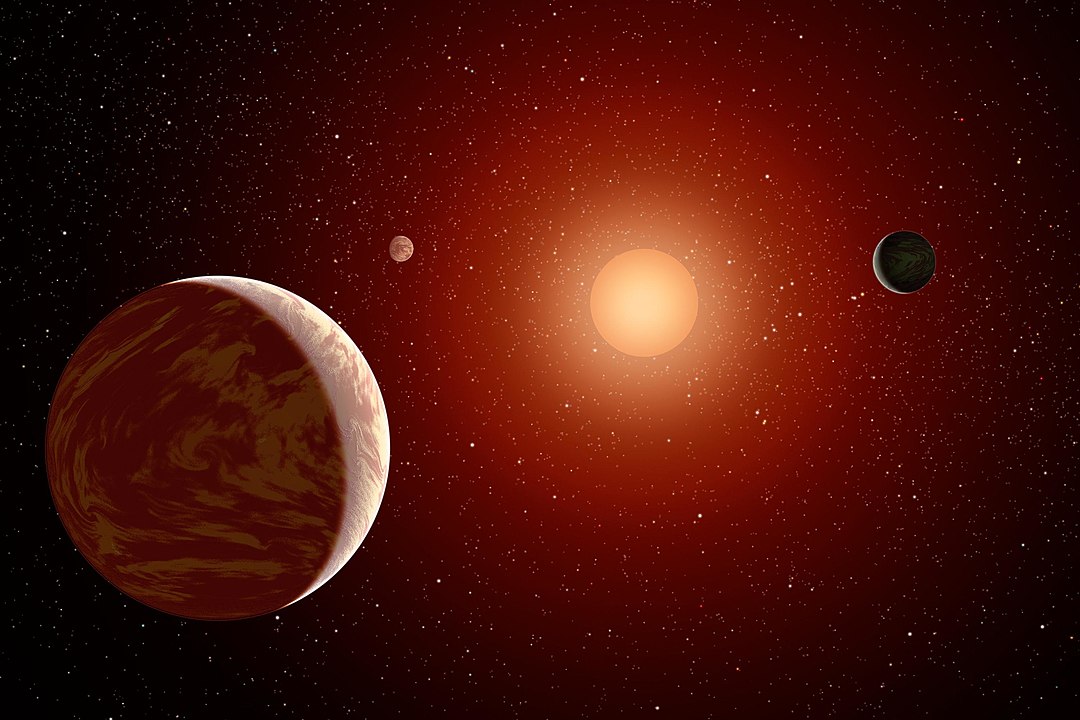The discovery of exoplanets, particularly those orbiting M-type red dwarf stars, represents one of the most exciting frontiers in modern astronomy. Recent studies have shed light on how certain environmental factors associated with binary star systems may influence the formation and characteristics of these distant worlds. This article delves into the significant findings surrounding a newly identified exoplanet within a binary system, providing an in-depth analysis of its implications for our understanding of planetary formation.
Introduction to Exoplanets
The term "exoplanet" refers to any planet that exists outside our Solar System. As of October 2023, a staggering 5,799 exoplanets have been confirmed across 4,310 star systems, with many more awaiting validation. The methods for discovering these celestial bodies have evolved drastically, primarily aided by dedicated space missions such as NASA's Transiting Exoplanet Survey Satellite (TESS), which monitors brightness dips in stars to detect transiting planets.
The Fascination with Red Dwarfs
M-type stars or red dwarfs are captivating to researchers due to their prevalence in the universe and apparent ability to host numerous rocky worlds, including potentially habitable ones. Interestingly, studies have shown that approximately 70% of stars in our galaxy are red dwarfs. This prevalence raises meaningful questions regarding the specific conditions that favor planet formation around these cooler, less massive stars.
The Binary Star System: TOI-6383
Recent research focused on the binary star system known as TOI-6383, less than 560 light-years from Earth. This system includes two red dwarf stars, TOI-6383A and TOI-6383B. TOI-6383A, the primary star, is roughly 46% the mass of the Sun, while its smaller companion, TOI-6383B, is approximately 20.5% the mass of the Sun. In a recent joint study, astronomers detected a giant planet designated TOI-6383Ab, which notably possesses a mass and size comparable to Jupiter.

Research Methodology
The astronomers belonging to the Searching for Giant Exoplanets around M-dwarf Stars (GEMS) survey employed a variety of observational techniques to confirm the existence of TOI-6383Ab. The techniques included:
- Photometry: A method of measuring a star's brightness to identify transiting planets as they pass in front of their parent stars.
- Radial Velocity Measurements: This technique involves detecting slight shifts in a star's spectrum resulting from the gravitational effects of orbiting planets.
- Ground-based Observations: Essential for corroborating findings from space-based observatories.
The research is part of an ongoing effort to examine whether red dwarfs can host gas giants, posing a significant challenge because M-type stars typically possess less massive protoplanetary disks, which begs the question: how do such massive planets form under these conditions?
Theoretical Framework of Planet Formation
The formation of exoplanets can be conceptualized through a few primary theories. According to the dominant core-accretion model, planets grow by accumulating material from a protoplanetary disk. Yet, this method has faced skepticism regarding its applicability to M-type stars due to their smaller disks. Instead, an alternative theory, known as the rapid formation model, suggests that a massive protostellar disk disintegrates into clumps, which subsequently coalesce into planets.
Findings and Implications
The detection of TOI-6383Ab provides an essential data point in evaluating these theoretical models of exoplanet formation. The notable mass and characteristics of this planet challenge existing ideas about the limitations of planet formation in red dwarf systems. To date, only 20 massive exoplanets have been detected around M-type stars, hence the GEMS survey aims to increase this number, facilitating a more comprehensive understanding of how giant planets can exist in such environments.
Tables of Key Findings
| Characteristic | TOI-6383A | TOI-6383B | TOI-6383Ab |
|---|---|---|---|
| Mass (Sun Mass) | 0.46 | 0.205 | ≈1 (similar to Jupiter) |
| Surface Temperature (K) | 3444 | 3121 | |
| Orbital Period (Days) | 1.79 |
Future Directions in Research
As researchers continue exploring the mechanisms behind exoplanet formation, the TOI-6383 system is expected to provide critical insights. Potential future directions include:
- Increased observational campaigns aimed at detecting more exoplanets around red dwarf stars.
- Improved modeling of protoplanetary disks to understand material availability in low-mass star systems.
- Long-term studies focused on characterizing the atmospheres and compositions of such exoplanets.
Conclusion
The discovery surrounding TOI-6383Ab stands as a testament to the extraordinary capabilities of modern astronomy and provides us with a deeper understanding of the complexities of planetary formation within binary systems. The implications extend not only to the specific exoplanets involved but also to our broader comprehension of how various star types can influence the evolution of planetary systems.
Further Reading
For more information, refer to the Universe Today resources on astronomical discoveries and exoplanets.





